- Home
- Gerald Durrell
Catch Me a Colobus Page 17
Catch Me a Colobus Read online
Page 17
‘To see The Tree,’ said Dix, in his normal rather gloomy fashion, and giving the tree capital letters. ‘Peggy wants to see it.’
‘What on earth’s The Tree?’ I inquired.
‘But don’t you know?’ said Peggy excitedly. ‘It’s the tree that everyone in Mexico comes to see.’
I glanced at the road. Apart from the three sloe-eyed little girls, in tattered frocks, playing in the dust, there was not a soul in sight.
‘It doesn’t seem to be over-popular as a tourist attraction,’ I said.
‘But you must come and see it,’ said Peggy earnestly.
‘Well, in that case, I certainly will,’ I said.
We got out of the car and as we did so I heard the sound of weird piping music and the dull thumping of a drum. We went through the gateway into the little park that surrounded the tiny church and there, towering over it, carefully protected by a fence around its base, stood The Tree. It took me aback. It was not only that it was incredibly tall – in fact, I think I have seen taller trees – it was the sheer massiveness of it that took your breath away. A great, towering, whispering pinnacle of leaves, standing on a trunk whose proportions made one gasp; a trunk whose buttress roots thrust out defiantly into the ground, making it look like the foot of some enormous predatory bird, clasping the earth – Sinbad’s Roc, perhaps, or something similar. I knew nothing of its history or its age, yet even I, in my ignorance, could see that this was a tree to end all trees. It exuded personality. We were all dazed by it, with the exception of Dix who had seen it before. But even he gazed at it with a sort of reverential awe because he had a great passion for trees.
‘They say,’ said Peggy, in hushed tones such as one would use in front of a deity, ‘they say that it is three thousand years old. It was a big tree – a very big tree – when Cortes came through here, because the population showed it to him.’
I looked at the great fountain of leaves above me and thought that, in that case, it must have been already a young sapling a thousand years before the birth of Christ.
The only other people who were there were an elderly, blind Indian clad in tattered, faded clothing and a battered straw hat, who was playing on a flute – a strange, uncanny, almost oriental tune – and standing beside him a little boy of six or seven who was beating out a complicated tattoo on a drum. They took no notice of us whatsoever.
‘What do you think they are doing?’ asked Peggy, since they hadn’t turned their attention on us and were therefore, presumably, not seeking to earn a few pesos by playing to us.
‘I bet you he’s playing to the tree,’ said Jacquie.
‘Good God! He might be,’ I said. ‘Go on, Peggy, go and ask him.’
‘Well, I don’t really like to interrupt him,’ said Peggy, who tended to get shy at moments of this sort.
But at that moment came the opportunity, for the man took the flute from his lips and wiped his mouth and just stood there facing the tree, and the boy ceased his drumming and stood looking at the ground and shuffling his bare toes in the dust.
‘Go on . . . Go and ask him now,’ I said.
Rather timidly, Peggy went over and we heard her speaking to the man. She came back, her face alight with delight.
‘He is playing to the tree,’ she said. ‘He is playing to the tree!’
‘There you are,’ said Jacquie triumphantly. ‘I knew it!’
‘But what’s he playing to the tree for?’ I asked.
‘I didn’t like to ask him that,’ said Peggy. ‘I felt it would be rather . . . rude, somehow.’
‘Well, I think you ought to get a recording of him,’ I said.
Peggy got her recording equipment out of the car and when the man next put the flute up to his lips, turned his blind eyes to the tree and started playing, she recorded the whole thing. Was he, I wondered, playing to the tree in the hope that it would restore his sight to him? Or just because it was the tree to end all trees? We none of us felt like asking him, and presently we walked out of the little garden and got back into the cars. As we drove away we could still hear the plaintive noise of the blind man’s flute and the rat-a-tat-tat of the little boy’s drum as they played to the giant tree.
Our trip towards the Guatemalan border, in order to try and see the Horned Guan and the Quetzal, was completely abortive, though the trip itself was fascinating. We ended up in the village of San Cristóbal and from there we could go no farther because at that time there was some political upheaval going on in Guatemala and guerrilla forces were dodging to and fro across the border. We were warned that, should such a rich looking party venture any farther, we might run into one of these bands of guerrillas, in which case they would undoubtedly shoot us out of hand for the sake of our equipment and clothing and any money we had with us. With the utmost reluctance, we turned back and headed once again for Mexico City.
When we got back to the city we decided that it would be cheaper for us to live in a flat and through the good offices of a friend in Shell we did manage to find one that was ideal. It was centrally situated, it had three double bedrooms, two bathrooms, an enormous living-room and a kitchen. Once installed in this we went our various ways, for the female members of the party wanted to do shopping and sightseeing, while Dix and Shep and myself were going to go on rabbit hunts.
I decided that our first attempt should be on Popocatepetl itself and so, very early one morning, we piled all our equipment into the car and drove off towards the giant volcano. As we climbed higher and higher and it became colder we looked back. In the pale dawn light, in the great bowl formed by the ring of volcanoes, we could see the patchwork quilt of Mexico City, a glitter of coloured lights – for at that hour of the morning the smoke had not built up. By afternoon, from the same vantage point, you wouldn’t have been able to see the city at all.
At the base of Popocatepetl there were several little hotels. We chose the least scruffy-looking and established ourselves there. The owner of the hotel was a loquacious, crafty Mexican. We asked him about Volcano rabbits, since he was a keen hunter and possessed a couple of hunting dogs. He told us that the Volcano rabbit was found right up as far as the edge of the snowline on the volcano, and that he would try to contact a friend of his whom he thought might be able to help us.
While we were waiting for this friend to materialise we drove up the volcano as far as the road allowed, into the Popocatepetl National Park, for I felt that, if we talked to the park rangers, they would be sure to be able to give us information about the whereabouts of the Teporingoes. The road zigzagged up the volcano and presently we were driving through thick pine forest. Underneath it grew the zacaton grass in great golden clumps like enormous uncombed wigs. When we eventually got to the park and out of the cars, the atmosphere was beautiful, the air so sharp and clean that it almost hurt your lungs to breathe. Above us towered the enormous dome of snow that was the top of the volcano. We had some difficulty in finding a forest guard but eventually, when we did find one, he became quite eloquent about Volcano rabbits. Yes, he knew them, and had seen them quite frequently in different parts of the park and on the other slopes of the volcano. In fact, he had actually caught a couple, he said proudly.
‘Where,’ I inquired, ‘are they?’
‘Oh,’ he said, ‘I ate them.’
This is an animal which, on paper at least, is one of the most strictly protected creatures in Mexico, and this was a forest guard, inside a national park, speaking to me. This sort of thing is not just common to Mexico, it is common all over the world where animals receive what I call ‘paper protection’ but are not protected in fact.
Having established that at least there were, in spite of the guard’s efforts, some Teporingoes left, we returned to the hotel where we found that the owner had run his friend to earth and brought him round to see us. He was an enormous, well-built man, with a great slab of a
face, rather like one of the more unattractive Mayan carvings, and he had quick, shifty eyes that seemed almost too small for his face. But he certainly seemed knowledgeable about the whereabouts and habits of the Volcano rabbits. The only way to catch them, he told us, would be to dig them out. This was a laborious process, but he suggested that, with two other men and himself and Dix and Shep and myself, we should be able to do the job. So we arranged to go up the volcano once again the following morning and start on our first rabbit hunt.
I had read up all I could about the Volcano rabbit and its habits – which was precious little because nobody seemed to have studied it to any great extent – and we knew that they lived only in the zacaton grass and fed almost exclusively on it. One authority does say that they feed on an aromatic wild mint that grows up there, but we could never even find this herb, let alone catch a rabbit feasting on it. The zacaton grass, we soon discovered, is not the easiest sort of place to hunt for anything. It is tall – as much as three feet high – a very pale golden-yellow in colour, and it grows in huge tussocks all over the soft, black, volcanic soil. In this soil the Volcano rabbits dig long and complicated burrows. Under the overhanging zacaton they work out a network of little runways, almost like tunnels, and they seemed to browse on top of the zacaton tussocks, feeding on both the new and the old grass, for a number of tussocks we found had been chewed as flat as a mown lawn on top, only leaving a sort of rim of overhanging grass round the edges. We drove up the slopes of Popocatepetl to about ten thousand feet, slowly, keeping a sharp look-out in every direction for any sign of a Volcano rabbit. I didn’t really think that we had any hope whatsoever of seeing one, for I felt sure that the noise of the car would send them diving for their burrows. But then we rounded a corner, and there to my complete astonishment, sitting like a sentinel on top of a large clump of zacaton, was a Teporingo.
In spite of the fact that we skidded noisily to a halt, the Teporingo, in a well-bred way, continued to sit on his clump of zacaton and ignore us completely. Although he was only some thirty feet away I examined him minutely and avidly through my field-glasses. He was approximately as big as the domestic rabbit known as a Netherland Dwarf – that is to say about the size of a fairly plump guinea-pig. His small, neatly-rounded ears were pressed close to his skull so that you had to look carefully to notice them at all, and there was absolutely no tail visible. His colouring was predominantly brown with a tiny white ring round the eyes which set it off, and his pelage had a sort of greenish tinge to it where the sun struck it. Having assured myself that it really was the animal that I’d come so far to find, and not one of the other species of rabbit that inhabit Mexico, we all vacated the car in a body. At this the Teporingo gave a slight squeak, like somebody rubbing a damp thumb over a balloon – but more piercing – jumped vertically into the air, landed once again on the tuft of grass he’d been sitting on and, using it as a sort of springboard, dived into the zacaton and disappeared.
Immediately we set to work. We rigged up a net round the entire area and then searched under the zacaton clumps to block up any exit holes that we thought his burrow might have. Having done this we concentrated our attention on the burrow down which we thought he’d disappeared, and started to dig. Dix, Shep and I were unaccustomed to this altitude and we found that the smallest action made us gasp for breath. Even the setting up of the nets, which was a simple enough operation in itself, left us gasping and wheezing like ancient cart-horses on their way to the knacker’s yard. So when it came to the digging we found it exhausting, to say the least, and after a time just had to sit down and leave the operation to our three hunters. They didn’t mind in the least and dug away with great vigour, apparently unaffected by the altitude. They dug and dug and produced a mountain of soft, almost powder-like black volcanic earth as they excavated the burrow: but there was no Teporingo. It was obvious that there was some side passage which we had not discovered and had left unblocked, and he had escaped. I was bitterly disappointed and could see that catching Volcano rabbits by this method was not going to be at all easy. However, we moved farther along the slope of Popocatepedl and when we found an area which we knew to be inhabited by the rabbits, we set to work again.
First we searched for a burrow that had fresh droppings outside so that we were reasonably sure it had an occupant before we started to dig. Then again we went through the laborious process of blocking up every other hole we could find in the vicinity, and digging commenced once more. Five times we did this and five times we met with no success. Then, at last, on the sixth dig we were lucky. One of the hunters who had been digging suddenly gave a small inarticulate grunt, got down on his knees in the black soil, thrust his hands into what was left of the burrow they were excavating, and pulled out a young, bright-eyed, and very much alive Volcano rabbit. After one preliminary wriggle it made no movement at all but just lay in his hands. Fearing that it might be suffering from shock, we hastily sexed it, found it was female, and transported it with the utmost tenderness to one of the cages that we had brought with us.
Knowing that both rabbits and hares, when they are put in captivity, show an extreme tendency to nerves and can easily kill themselves by jumping straight at wood or wire if what they consider an enemy is too close, I was a little frightened that this, our first Teporingo, might do the same when put into the cage. I had a coat ready to put over it so as to make her feel safer. But when we put her in the cage she simply sat there, placidly staring at us. After a moment or so I tentatively put out my hand and scratched gently against the wire to see what effect it would have. I was quite taken aback when the Teporingo gave a tiny hop, came over to the wire and smelt my finger. It was as though we had captured a domestic animal instead of a wild one, she seemed so tame and phlegmatic about the whole thing.
It was growing towards evening now and the great snowcap of Popocatepetl was turning a delicate shade of pink in the falling sun. I decided, when I’d finished gloating over our capture, that the best thing would be to take her back straightaway to Mexico City and see how she settled down before progressing any farther. This we did, and on the drive back to the city I gave the subject of Volcano rabbits and their capture some attention. It was obvious that if we were going to pursue them at such heights the three of us were useless as hunters because of the altitude, but I knew that they did exist in little pockets farther down the flanks of the great volcano. It seemed to me that the sensible thing to do would be to choose several villages that lay along the base of Popocateped and use the method that I’d employed in many parts of the world before, which was to alert the villagers and offer a reasonable price for any Teporingoes brought in unharmed. However, before we did this, I wanted to make sure that the Teporingo we had caught was going to settle down and adapt itself to captivity. It was one thing to catch your animal, I reflected, thinking of past bitter experiences, and quite another thing to keep it.
When we got back to the flat in the city the Teporingo, in her wire cage, was placed reverently on a large sheet of newspaper in the middle of the living-room floor, and we then sallied forth to a local market where we purchased as many different kinds of fruit and vegetable, green-stuffs and herbs, as we could lay our hands on.
When we got back to the flat the Teporingo still seemed as unperturbed as she had been the moment she was caught. We carefully prepared the food and counted it – so many sprigs of this, so many sprigs of that, so many pieces of apple, and so on, so that we could tell exactly what had been put into her cage and what, if anything, she was going to eat and show a preference for. Then we placed these delicacies in the cage, covered her over so that the cage was partially dark and would give her a greater sense of security, and went out.
We had a very good dinner to celebrate and when, some three hours later, we came back, I cautiously removed the covering from the cage to see if she’d eaten something. I didn’t expect for a moment that she had, because it generally takes a wild-caught animal a certai
n length of time to settle down, and I knew that the food was completely new to her. So I felt slightly incredulous when I found that she’d eaten nearly everything in the cage with the exception of one herb which apparently was not to her liking. She’d even eaten the apple, which I didn’t think she’d touch. While delighted with this response I knew that we would still have to wait a few days to make sure that the new diet was not going to affect her in any way and produce enteritis or some similar malady which might easily kill her. But it was a first class start; almost too good to be true.
The following day, leaving our first Teporingo in Jacquie’s care, Dix and Shep and I investigated the villages that lay along the lower slopes of Popocatepetl. There were quite a number of them but only two had what we considered to be Teporingo colonies within easy striking distance. We interviewed the equivalent of the mayor of each village, told him what we wanted and offered what was, for the poverty-stricken Mexican, a very high price for any Teporingo brought in unharmed. We left them with a suitable supply of cages and promised that we would come back in two days’ time to see if they had achieved any results.
For two days I watched our rabbit like a hawk for any sign of distress or disturbance, but she remained placid and, with the air of a gourmet, ate practically everything that we put into her cage. I hoped fervently that the two villages we had been to had been successful, because our time in Mexico was growing short and, although we had achieved what we had come out to do, one solitary female was of no earthly use. What we wanted was the full complement allowed by my permit, ten in all, of which I hoped at least four would be males. In this way we could set up a colony with some hopes of breeding.
Now that I appreciated the difficulty of obtaining the Teporingoes I had, mentally as it were, scratched off the list the other species which I had permission to capture but which I didn’t think we’d have time to acquire. That was the Thick-billed parrot. But during the two days we were waiting before we went back to the villages to see whether they had caught any Teporingoes or not, we had an extraordinary piece of luck. I had been told about an animal dealer whose establishment was on the outskirts of the city, and although I knew that the animal dealers were carefully controlled by the Ministry and were not allowed to handle any strictly protected animal, I thought it would be worth going down to see what he’d got. When we arrived, to my delight, there was a cage with three pairs of Thick-billed parrots clambering about, gaudy, raucous, with a glint of mischief in their eyes and not a feather out of place. After some protracted bargaining I purchased all three pairs and we carried them in triumph back to the flat. They were beautiful young birds in perfect condition and Shep went into ecstasies over them. Although they were delightful and colourful and I was pleased to have got them so effortlessly, I still concentrated mainly on the problem of the Volcano rabbit. Having obtained one, it would be a bitter blow if we could get no more before we were due to leave and I knew that, should we not be able to obtain any more, we would have to take this female and release her again where we had caught her, thus defeating the whole object of the expedition.

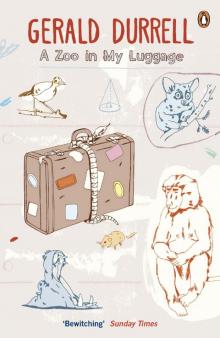 A Zoo in My Luggage
A Zoo in My Luggage The New Noah
The New Noah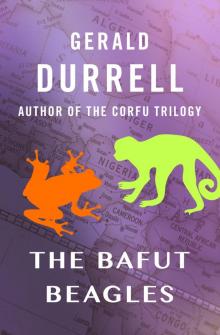 The Bafut Beagles
The Bafut Beagles Encounters With Animals
Encounters With Animals Catch Me a Colobus
Catch Me a Colobus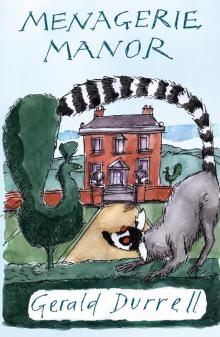 Menagerie Manor
Menagerie Manor The Picnic and Suchlike Pandemonium
The Picnic and Suchlike Pandemonium Ark on the Move
Ark on the Move My Family and Other Animals
My Family and Other Animals Two in the Bush (Bello)
Two in the Bush (Bello) The Stationary Ark
The Stationary Ark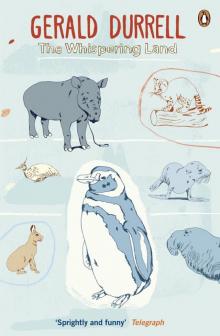 The Whispering Land
The Whispering Land Three Singles to Adventure
Three Singles to Adventure Fillets of Plaice
Fillets of Plaice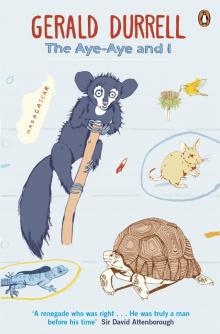 The Aye-Aye and I
The Aye-Aye and I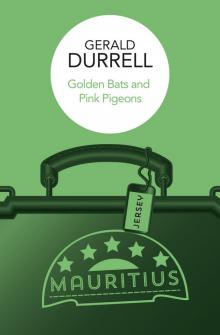 Golden Bats & Pink Pigeons
Golden Bats & Pink Pigeons The Drunken Forest
The Drunken Forest Marrying Off Mother: And Other Stories
Marrying Off Mother: And Other Stories The Corfu Trilogy (the corfu trilogy)
The Corfu Trilogy (the corfu trilogy) The Corfu Trilogy
The Corfu Trilogy Marrying Off Mother
Marrying Off Mother Two in the Bush
Two in the Bush